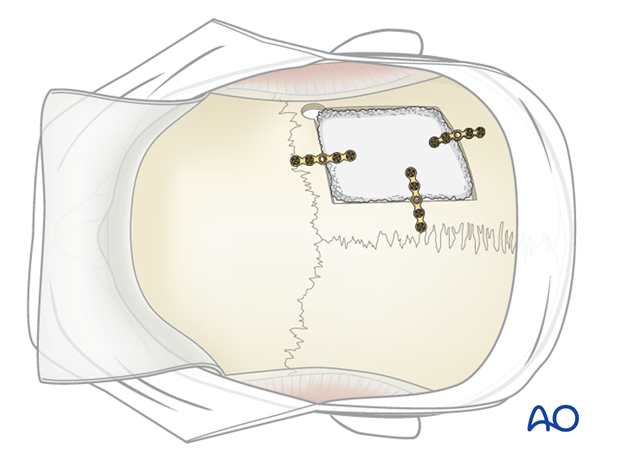Harvesting of calvarial bone graft
1. Introduction
The cranial vault offers a large stock for harvesting calvarial bone grafts.
Depending on the type and size of the defect to be repaired, various harvesting techniques can be used. A coronal incision provides excellent access for the harvesting of calvarial bone graft, though other incisions can also be used.
If the pericranium has been elevated posteriorly already, the dorsal wound edges may be reflected posteriorly for additional exposure of the donor site.
Note of caution:
Even the harvesting of outer table calvarial bone grafts is associated with potential intracranial injury. Therefore the graft should be taken from the skull over the non-dominant hemisphere.
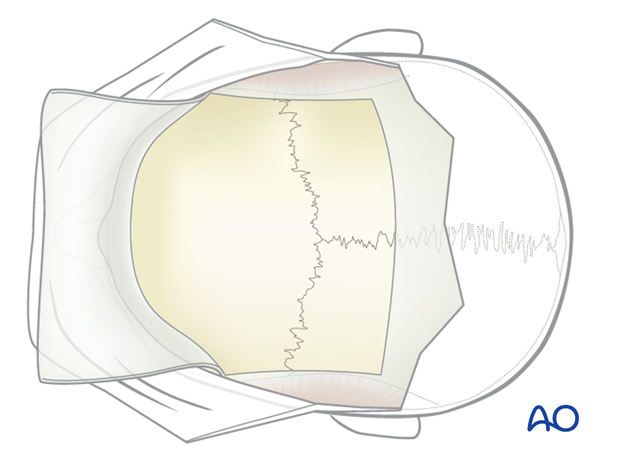
The parietal bone is the most appropriate source for cranial bone grafts. The inner and the outer cortex is thick with a wide diploë in between.
The harvesting area should stay away 2.0 cm from the cranial suture lines, in particular from the midline, in order to prevent injury to the sagittal sinus.
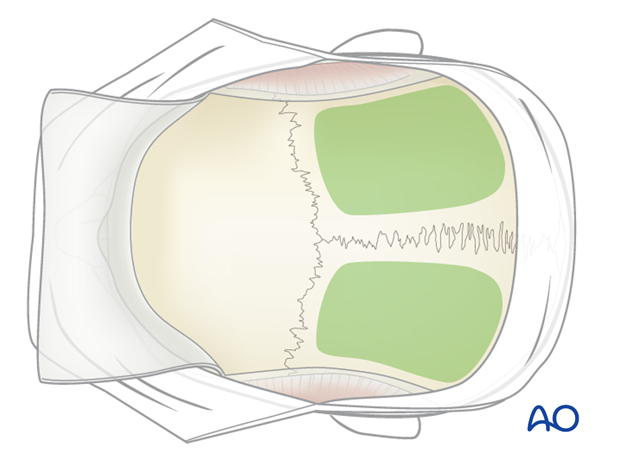
Precautions when harvesting outer table bone grafts
- Ensure sufficient bone thickness, ideally with CT scan.
- Accidental full thickness harvesting may occur. In this case, the integrity of the dura must be checked and absence of bleeding must be confirmed.
- Some surgeons prefer special observations (neuro checks) to monitor patients for 24 hours to rule out any intracranial complications.
Various types of calvarial bone graft
There are several types of calvarial bone grafts that may be taken:
- Shaved corticocancellous outer table graft with attached pericranium
- Bone paste or bone dust
- Split thickness outer table grafts
- Full thickness parietal bone graft
- Inner table grafts taken from a full thickness bone flap
2. Shaved corticocancellous outer table graft with attached pericranium
These small grafts are taken with a sharp osteotome after scoring their outlines with a side-cutting burr or by direct tangential cutting off a bone convexity with a reciprocating or oscillating saw. The resulting bone splinters are held together by the pericranium left on the surface.
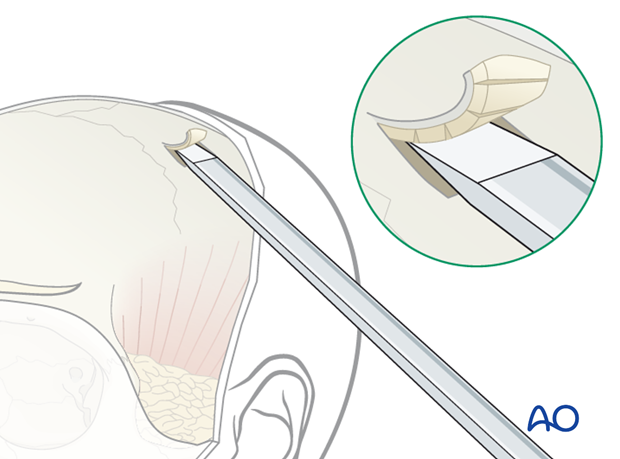
The thin grafts will curl and are malleable within certain limits.
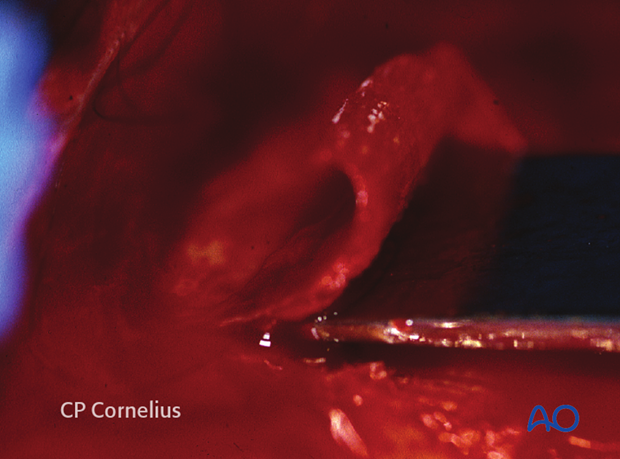
3. Bone paste or bone dust
Bone paste or bone dust may be harvested with a hand-powered instrument or a large neurosurgical perforator at very low speed passing through the outer table into the diploë.
Additional cancellous bone can be harvested from the diploic layer using bone curettes or bone splitters.
Note: Do not use bone dust that is the byproduct of high speed drilling.
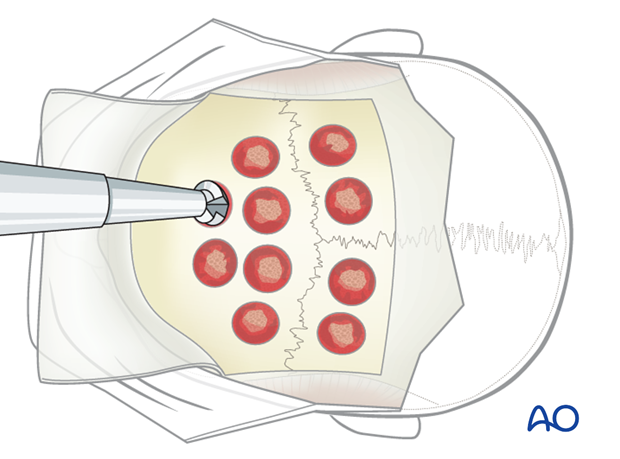
Alternatively, a bone scraping instrument may be used to scrape bone particles from the calvarium.
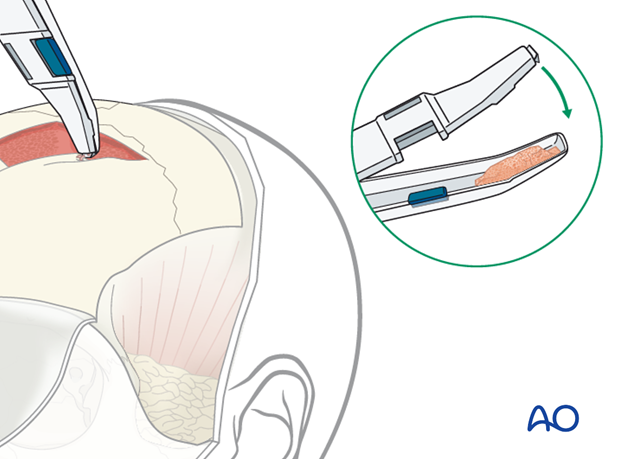
4. Split thickness outer table grafts
For such grafts, the outer table is split from the inner table at the level of the diploic layer.
The grafts are taken in strip segments either single or in a series.
The segments are oriented either in a sagittal or transverse direction.
The outline of the grafts is traced with a side-cutting burr or a saw.
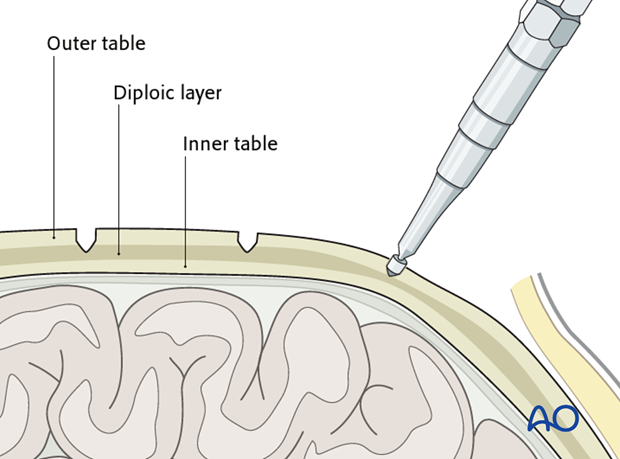
The initial grooves are deepened to the level of the diploë.
The diploë must be visible, which is indicated by cancellous bone bleeding.
A trough is created along the side of the bone graft by tangential saw cuts. The outer edges are beveled smooth to give a flat access angle for an osteotome and thereby permit calvarial splitting.
The outer cortex grafts are separated from the calvarium by sequential advancement of thin osteotomes through the diploic layer.
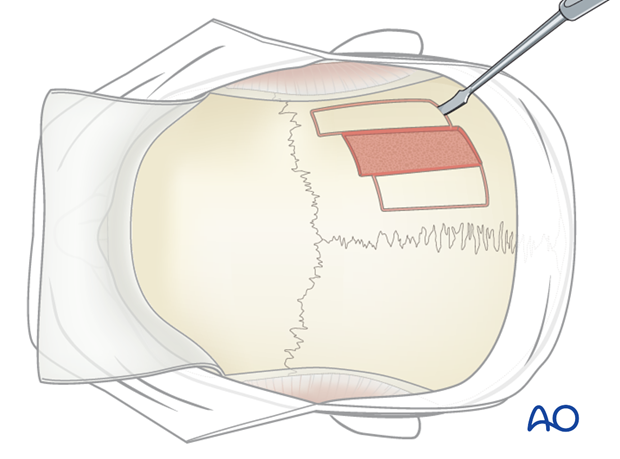
Alternatively, elevation of the outer table can be accomplished using a sagittal saw with a 90° bend to elevate the outer table.

Technique: partial thickness
Separation of the graft from the inner table is achieved with chisels.
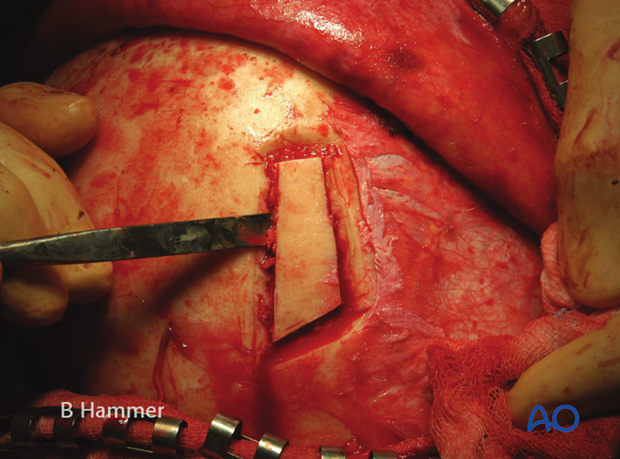
N.B.: perforation into the cranial cavity should be avoided. If there is a perforation into the cranial cavity, integrity of the dura and absence of bleeding must be confirmed.
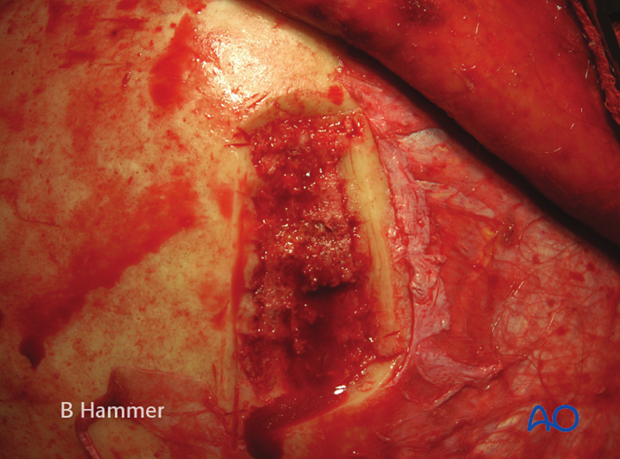
Depending on what is required, the outer table grafts are sized to a width of up to 20 mm and ...
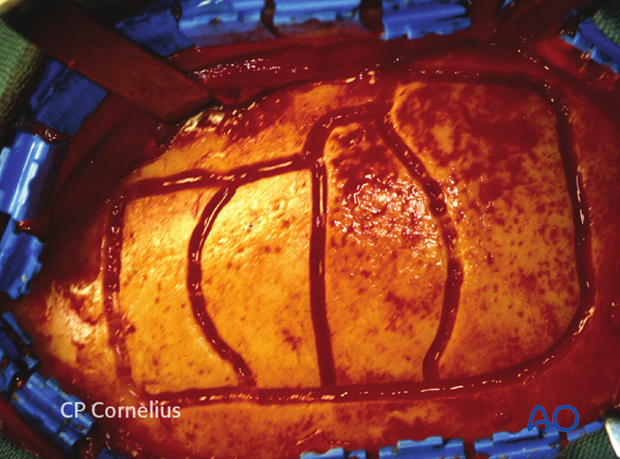
... may be slightly curved.
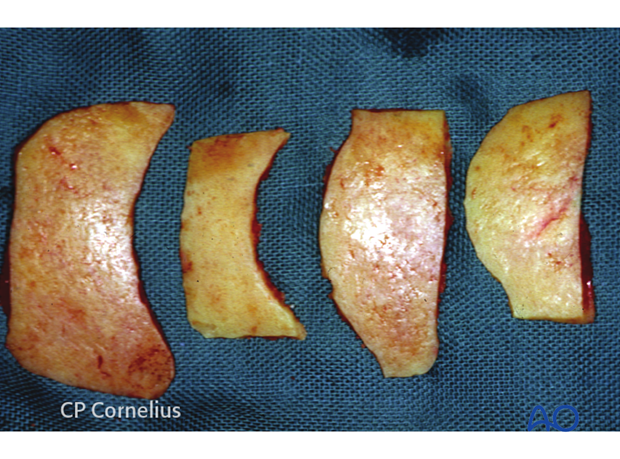
The normal contour of the cranial bone can be restored using bone substitutes but it is not necessary unless there are aesthetic concerns.
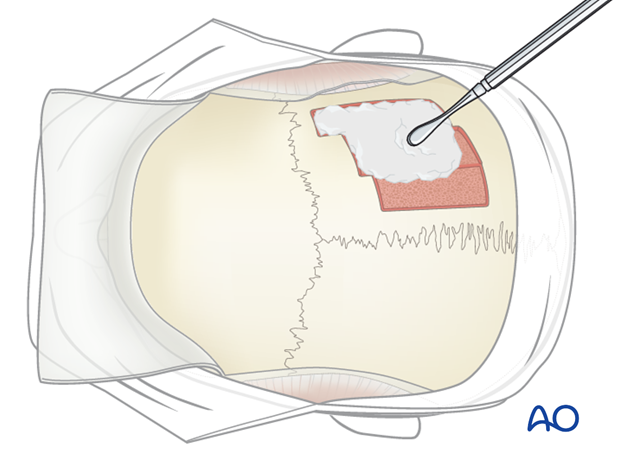
5. Full thickness parietal bone graft
These grafts are removed with a formal craniotomy and are indicated if long biparietal bone struts across the sagittal sinus or grafts with special curvatures are required.
Burr holes are made with a trephine followed by dural dissection and craniotomies.
The harvested bicortical parietal bone can be split into its two laminae. The inner cortex is used for facial reconstruction while the outer cortex is returned to cover the donor site.
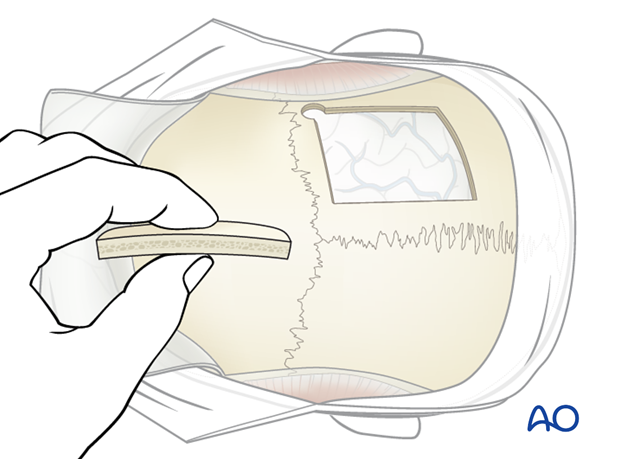
Technique using a craniotome
The donor area is chosen. Then one burr hole is made and...
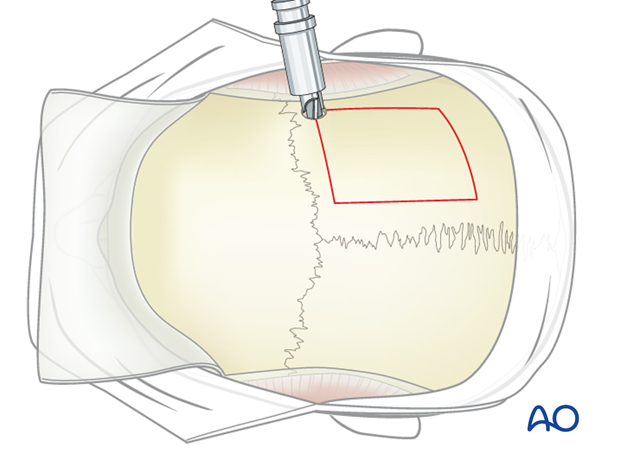
... the desired shaped graft is harvested using a craniotome.
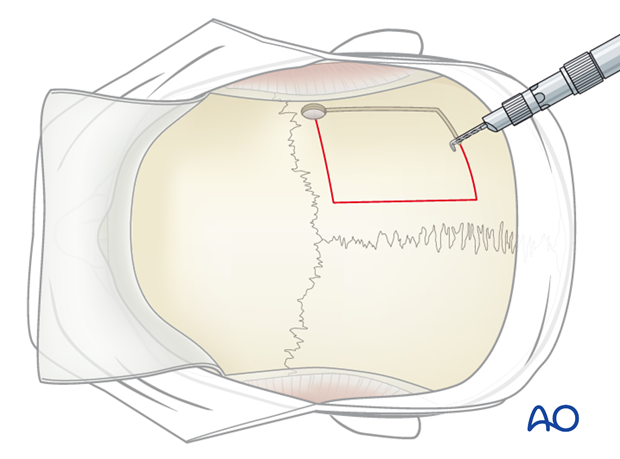
The bone flap is carefully lifted making sure that no dural lacerations occur.
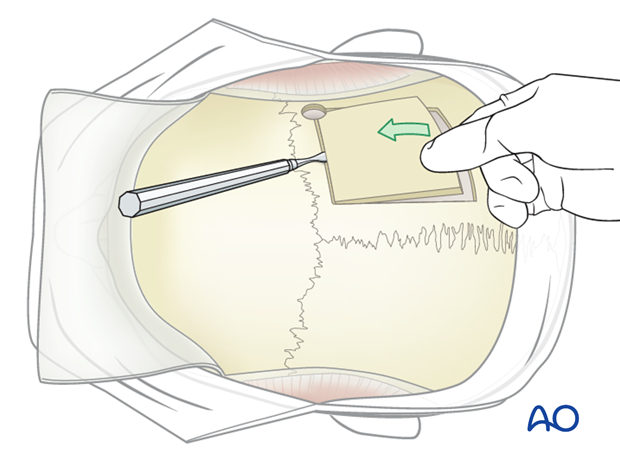
Dural suspension at the edges of the craniotomy should be performed. In case of dural leakage, depending on the size of the defect, either dural repair, dural patches, or sealant techniques should be used.
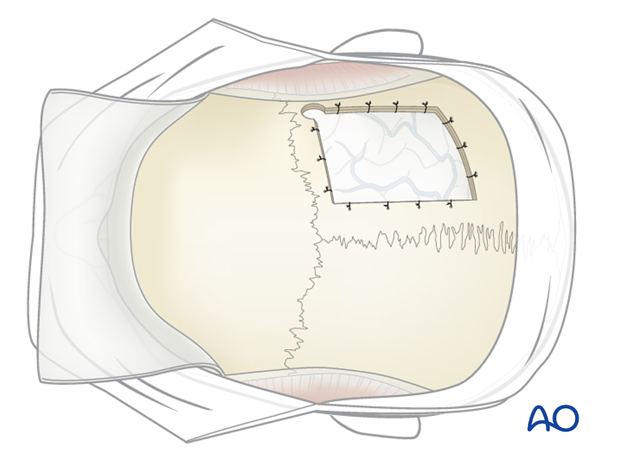
If full thickness cranial bone is harvested reconstruction of the defect is necessary not only to restore the contour but to protect the brain. Techniques are analogous as in partial thickness, reconstructive options include titanium mesh, porous polyethylene and polymethylmethacrylate PMMA.
